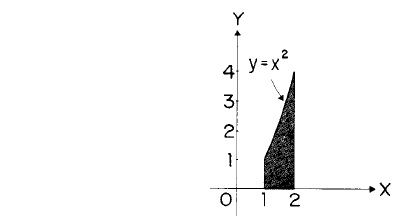|
|
|
Note: In this examination, ln x denotes the natural logarithm of
x (that is, logarithm to the base e).
|
|
|
1.
|
If  , then 
|
|
|
2.
|
|
|
|
3.
|
If  , then the set of values for which f
increases is
|
|
|
4.
|
a. | -1 | b. |  | c. | 0 | d. |  | e. | 1 |
|
|
|
5.
|
If  , then the value of 
at the point (0,1) is a. | 0 | b. |  | c. | 1 | d. | 2 | e. | undefined |
|
|
|
6.
|
If  , then 
|
|
|
7.
|
Let  . When x = 0 and dx = 2, the
value of dy is
|
|
|
8.
|
The acceleration a of a body moving in a straight
line is given in terms of time t by  . If the velocity of the
body is 25 at t = 1 and if s( t) is the distance of the body from the origin at
time t, what is  ?
|
|
|
9.
|
|
|
|
10.
|
The area of the region bounded by the lines x= 0, x= 2, and y
= 0 and the curve  is
|
|
|
11.
|
A series expansion of  is
|
|
|
12.
|
Which of the following series
converge?
I.  II.  III.  a. | I only | b. | III only | c. | I and II
only | d. | I and III only | e. | I, II, and III |
|
|
|
13.
|
|
|
|
14.
|
|
|
|
15.
|
A particle moves on the curve y= ln x so that the
x-component has velocity  for  . At time
t = 0 , the particle is at the point (1, 0) . At time t = 1, the particle is at the
point
|
|
|
16.
|
If  and the domain is the set of all x
such that  , then the absolute maximum value of the
function f occurs when x is
|
|
|
17.
|
If  and if  when x
= 0, then when x =1, y =
|
|
|
18.
|
|
|
|
19.
|
If  , then 
is a. |  | b. |  | c. |  | d. |  | e. | None of the above |
|
|
|
20.
|
The average (mean) value of  over the interval  is
|
|
|
21.
|
 is
|
|
|
22.
|
Let f and g be differentiable functions such that If h( x) = f ( g( x)), then 
|
|
|
23.
|
Given  
|
|
|
24.
|
 Calculate the approximate area of the
shaded region in the figure by the trapezoidal rule, using divisions at  and  .
|